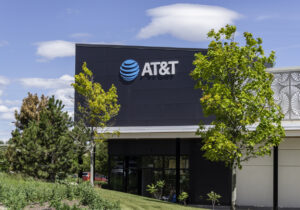5 tips to get employees excited about all-hands meetings
The viral ‘pity city’ town hall offers many lessons.

Julie Baron is an affiliate consultant with Ragan Consulting Group who knows a thing or two about employee town halls.
Tom Corfman is a senior consultant with Ragan Consulting Group.
The chief executive of a little-known office furniture maker has revealed once again a lesson about life in the C-Suite: When the CEO has a bad day on live video, everybody finds out.
And we mean everybody.
During a town hall meeting last month on Zoom, Andi Owen brusquely told employees of Zeeland, Michigan-based MillerKnoll who were worried about bonuses to “leave pity city.”
An 80-second clip of her comments raced through social media starting April 16, 2023. National news outlets picked up the story starting two days later.
“Andi Owen is the latest leader to face backlash after a video from a meeting is shared online,” The Wall Street Journal reported.
Owen wasn’t even the only CEO that week whose town hall provoked online denunciation.
To explain a new in-office work mandate, the CEO of a Utah digital marketing firm with about 1,500 employees praised an employee who “sold their family dog” to comply with the requirement.
Oh boy. Sounds like a good time to review our five tips on how to conduct town hall meetings with employees.
1. Address what employees want to know. MillerKnoll gets an A for following this tip.
“Questions came through about how we can stay motivated if we’re not going to get a bonus,” Owen said. “’What can we do? What can we do?’ Some of them were nice and some of them were not so nice. So, I’m going to address this head on.”
Employees appreciate straight talk. Owen’s promise to “address this head on,” likely was momentarily welcome before things took an abrupt turn.
Too often CEOs focus on what senior management wants to tell employees, ignoring or sidestepping employees’ concerns. That mistake widens the gap between the corporate offices and managers and employees.
2. Don’t go to bed angry or start a town hall that way. At least 85% of employees say mutual empathy between leaders and workers raises morale, according to Ernst & Young’s 2023 Empathy and Business Survey. Yet more than half of employees surveyed say corporate attempts at empathy are inauthentic, up from 46% two years ago.
MillerKnoll employees’ concerns about bonuses are obviously understandable. The company, with 2022 revenue of $3.95 billion, is apparently facing challenges hitting its sales target. Bonuses are determined after the current fiscal year ends this month.
“Don’t ask about, ‘What are we going to do if we don’t get a bonus?’ Get the damn $26 million,” Owen told her employees. “Spend your time and your effort thinking about the $26 million we need and not thinking about what are you going to do if we don’t get a bonus, all right?”
Whatever happened to counting to 10? Or 20? Or however long it takes to get the anger out of your system?
The $26 million is an internal figure, a company spokesperson told the Journal, so MillerKnoll employees likely knew what it meant.
Owen made more than $4.9 million in fiscal 2022, which ended in May, including a $1.29 million bonus, a fact not lost on social media commentators or business reporters. The company’s net sales were $3.95 billion.
3. Ask employees for questions. Managers should also be counted on to suggest topics before the meeting based on what their teams are saying. Use these questions to set the agenda.
Getting questions in advance also gives the CEO and communications team time to prepare answers. Owen might have done that more thoughtfully, as she half-heartedly admitted in her apology.
“I want to be transparent and empathetic, and as I continue to reflect on this instance, I feel terrible that my rallying cry seemed insensitive,” she said.
4. Answer questions. Responding to questions is a key to engaging employees during the town hall. It turns a PowerPoint and monologue into a two-way conversation. Employees always want to know the reasons behind decisions and changes, as well as specific, relatable examples.
The CEO doesn’t need to know all the answers. Acknowledging that burnishes the chief executive’s credibility. Deferring to other leaders is an important show of confidence in them.
Leave enough time to answer questions. Take a break for Q&A in the middle of the town hall instead of the end, when the town hall is nearly over.
It’s unclear whether Owen took questions earlier in her town hall. After her lecture on bonuses, she ended the meeting by saying, “Thank you. Have a great day,” making an explosion gesture with her hands and mouthing the word “boom.”
After the event, follow up on unanswered questions, either privately or to the entire staff. Questions may serve as ideas for newsletter stories, leadership podcasts or videos, or postings on the intranet.
Leaving questions unanswered is a telling sign that the CEO doesn’t care. A town hall is a chance to show employees that “we hear you, and want to answer your questions all the time, not just during quarterly town hall meetings.”
5. Keep it between 30 and 60 minutes. After an hour, the audience starts to stop listening and even the CEO often is tired. Under an hour is respectful of employees’ time, whose schedules often change on the hour. It’s more effective to hold shorter, more frequent town halls.
Owen’s flare-up came at the end of a 75-minute meeting.
Break up the town hall with different speakers. TED Talks are 18 minutes for a reason. CEOs often dominate a town hall, adding to the audience’s fatigue. Chief executives who think highly enough of the management team to hire them should trust their expertise.
Creating connections
Town halls create an opportunity that most employees don’t have to get to know a CEO’s personality and values, an executive coach wrote in the Harvard Business Review.
“When it comes to their leaders, employees want and need a feeling of intimacy — the ability to see into them and to connect with them,” she wrote.
MillerKnoll’s employees probably didn’t get what they wanted in Owen’s town hall.
Follow RCG on LinkedIn and subscribe to our weekly newsletter here.






